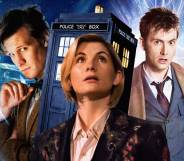The Chronicles of Narnia: Prince Caspian

After the success of Peter Jackson’s gloriously ambitious adaptation of JRR Tolkien’s The Lord of the Rings trilogy, it was surely only a matter of time before Hollywood got around to tackling that other great mid-20th century fantasy series, CS Lewis’ Chronicles of Narnia. Not only were Tolkien and Lewis good friends (albeit with a healthy professional rivalry), but they were in constant discussion throughout the contemporaneous writing of their two epic series.
Throw in the mix, the current prevalence of evangelical Christianity in the United States and you’ve surely got a winning formula. Lewis’s books, though great fun simply as surface-level adventure stories, were also Christian morality tales, heavily influenced by biblical imagery. It’s the sort of thing American Christians would surely love – an antidote to the supposed evils of the Harry Potter franchise, with its brainwashing of our children into thinking witchcraft is acceptable. Yes, Lewis’ books may well feature a whole bunch of talking animals – but one of them, the great lion Aslan, is a Christ figure designed to get children keen on Christian teachings without realising it, so the devilry involved in anthropomorphising low beasts of the fields can be forgiven on this occasion.
Of course, where Tolkien was writing for an adult audience – the Oxford professor was keen to explore complex issues of mythology and linguistics through his writings at least as much as he was to create a good story – the fact that Lewis was aiming very much at children has meant that these Narnia film adaptations haven’t got quite the same appeal as Peter Jackson’s epic Rings movies. The filmmakers may well have got in the same special effects team, but Lewis’ vision was always far smaller scale than that of Tolkien’s, giving far less scope for a truly cinematic experience. Indeed, the BBC’s television adaptations from the late 80s still stand up well enough for a young audience as to make big budget Hollywood versions largely unnecessary.
However, with the middle books in Lewis’ series, the scope for excitement and visual grandeur is greatly increased. Where 2005’s The Lion, the Witch and the Wardrobe underwhelmed many who had been led to expect another Lord of the Rings, Prince Caspian – the second in the film series, though the fourth chronologically in book order – has far more action and excitement, albeit a very similar storyline, as the four hero children return to Narnia to overthrow yet another evil tyrant who’s managed to take over in their absence.
Nonetheless, for children unfamiliar with the BBC adaptation – and for adults who prefer their impressive computer-generated effects to puppets and dwarf actors dressed as mice – it’s hard to be overly critical of Prince Caspian the movie. It is faithful and technically superb to the extent that no fan of Lewis’ Narnia books could really have any cause for complaint. Because the flaws here are not those of the filmmakers, but of the original book – a simplistic world view and, despite the fantastical setting, a decided lack of imagination on Lewis’ part that he only really managed to shake off with The Voyage of the Dawn Treader, which should be the next film in the series. He lost it again by the time of the overly preachy (and really rather dull) The Last Battle – in which all the heroes are suddenly killed and whisked off to Lewis’ version of Heaven in some kind of bizarre nod to the Book of Revelation, which has truly traumatised generations of children – but rest assured that the next two films should be far more engaging, as the source material finally starts to allow the filmmakers to let rip.


